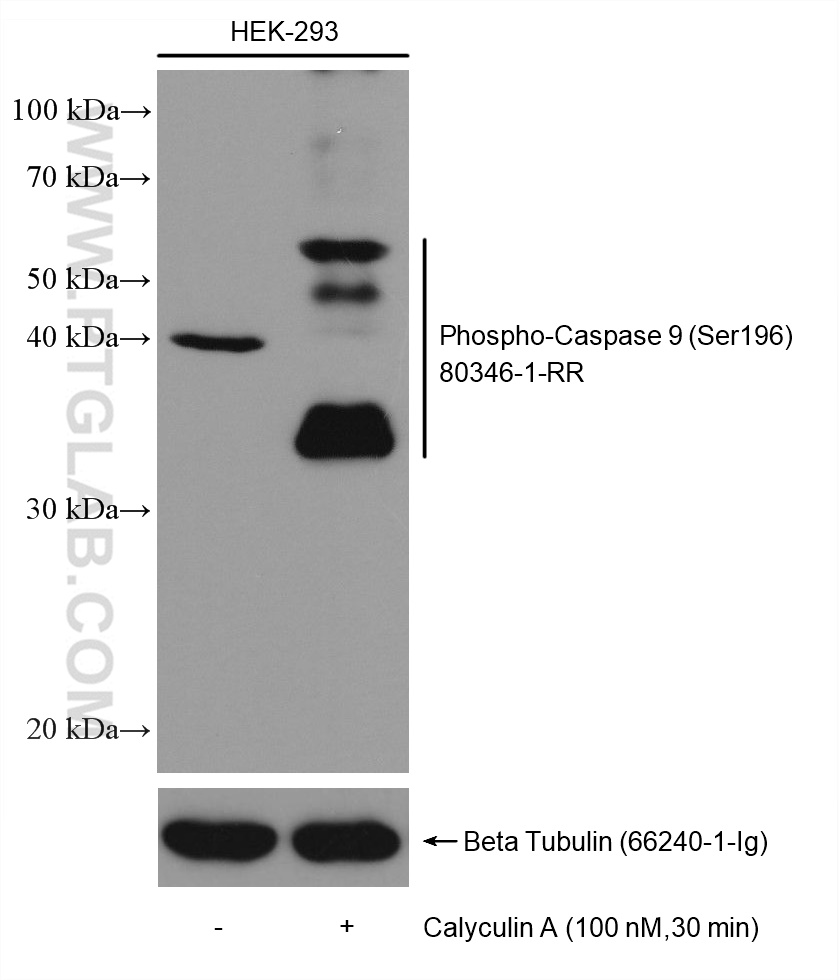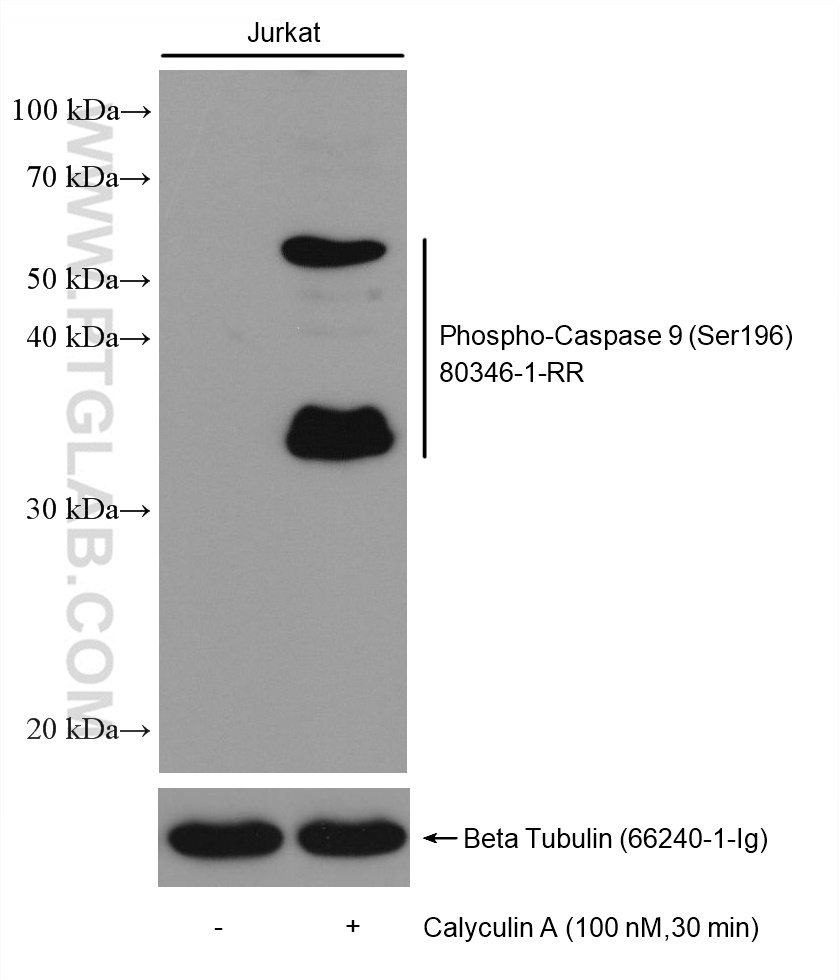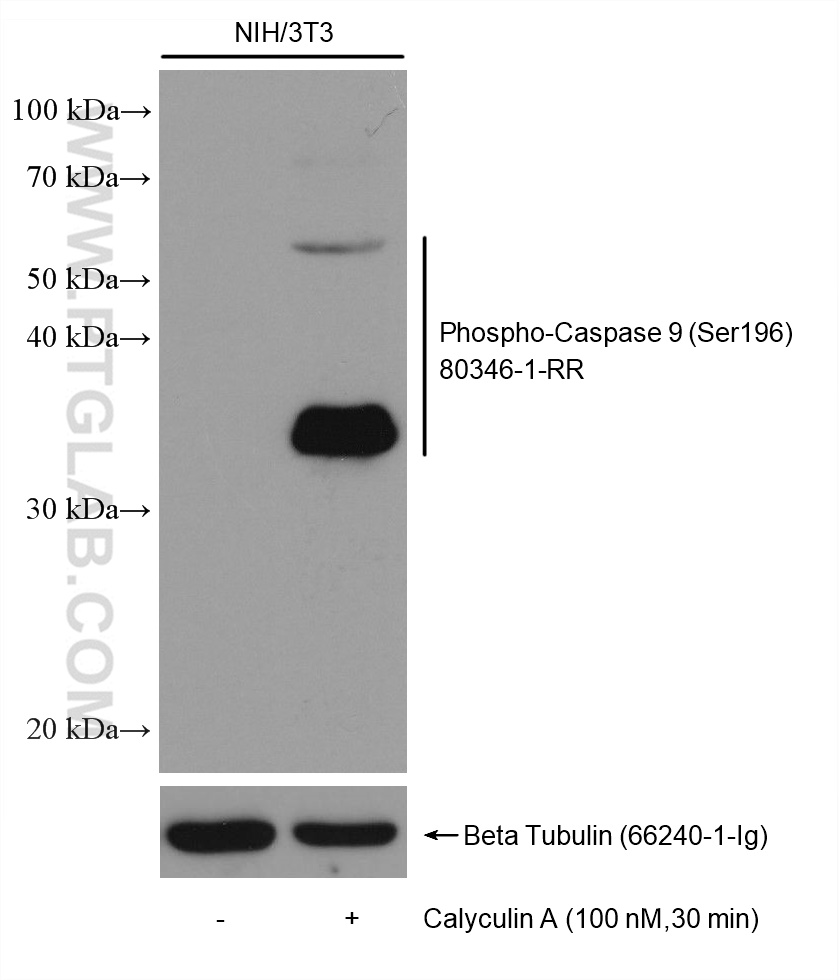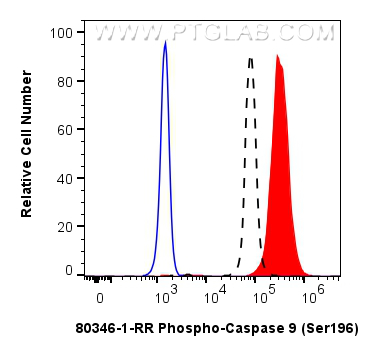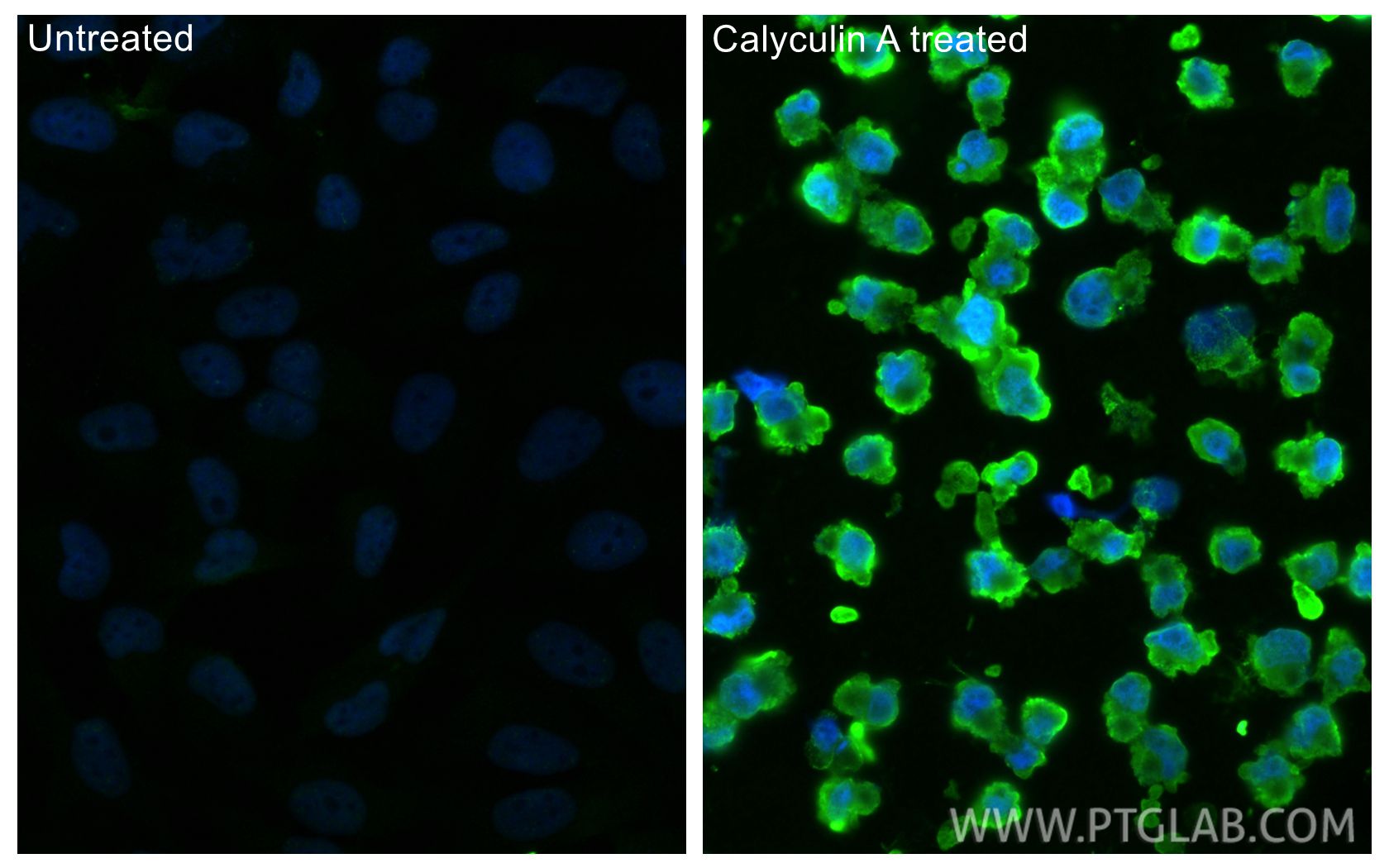验证数据展示
产品信息
80346-1-PBS targets Phospho-Caspase 9 (Ser196) in WB, IF/ICC, Indirect ELISA applications and shows reactivity with human, mouse samples.
| 经测试应用 | WB, IF/ICC, Indirect ELISA Application Description |
| 经测试反应性 | human, mouse |
| 免疫原 |
Peptide 种属同源性预测 |
| 宿主/亚型 | Rabbit / IgG |
| 抗体类别 | Recombinant |
| 产品类型 | Antibody |
| 全称 | caspase 9, apoptosis-related cysteine peptidase |
| 别名 | Caspase 9 (Ser196), p Caspase 9, p Caspase 9 (Ser196), p Caspase 9 Ser196, p-Caspase 9 |
| 计算分子量 | 46 kDa |
| 观测分子量 | 46 kDa, 35 kDa |
| GenBank蛋白编号 | BC002452 |
| 基因名称 | Caspase 9 |
| Gene ID (NCBI) | 842 |
| RRID | AB_2918890 |
| 偶联类型 | Unconjugated |
| 形式 | Liquid |
| 纯化方式 | Protein A purification |
| UNIPROT ID | P55211 |
| 储存缓冲液 | PBS only, pH 7.3. |
| 储存条件 | Store at -80°C. The product is shipped with ice packs. Upon receipt, store it immediately at -80°C |
背景介绍
Caspase 9 also name as MCH6, APAF3, APAF-3, ICE-LAP6 and CASPASE-9c, is a member of the cysteine-aspartic acid protease (caspase) family. It's synthesized as a 46kDa precursor protein which can be cleaved into a 35kDa subunit and a 11kDa subunit. The phosphorylated type can be detected at 55kDa and 35kDa. It plays a central role in the mitochondrial or intrinsic apoptotic pathway that is engaged in response to many apoptotic stimuli. Once activated, caspase-9 cleaves and activates the effector caspases 3 and 7 to bring about apoptosis. It can be phosphorylated by PKB/AKT1 at Ser196, this modification will downregulate its activity and decrease apoptosis. Akt phosphorylation site found in human caspase 9 is absent in mouse caspase 9.It's reported that there is an increase in caspase 9 expression and activity in the hypoxic brain. Inhibition of Caspase 9 activity would render opportunity to treat neurological diseases such as stroke, neurodegenerative diseases or brain injury caused by hypoxia. (PMID: 19788417, PMID: 10529400, PMID: 9812896, PMID: 18840507) In recent years, the localization of caspase9 was a focus of interest. Beside its cytoplasmic distribution, a very extensive localization study was done on rat brain tissue, where caspase9 was found located predominantly in the nucleus and to a lesser extend in the cytoplasm [PMID: 15541731].

